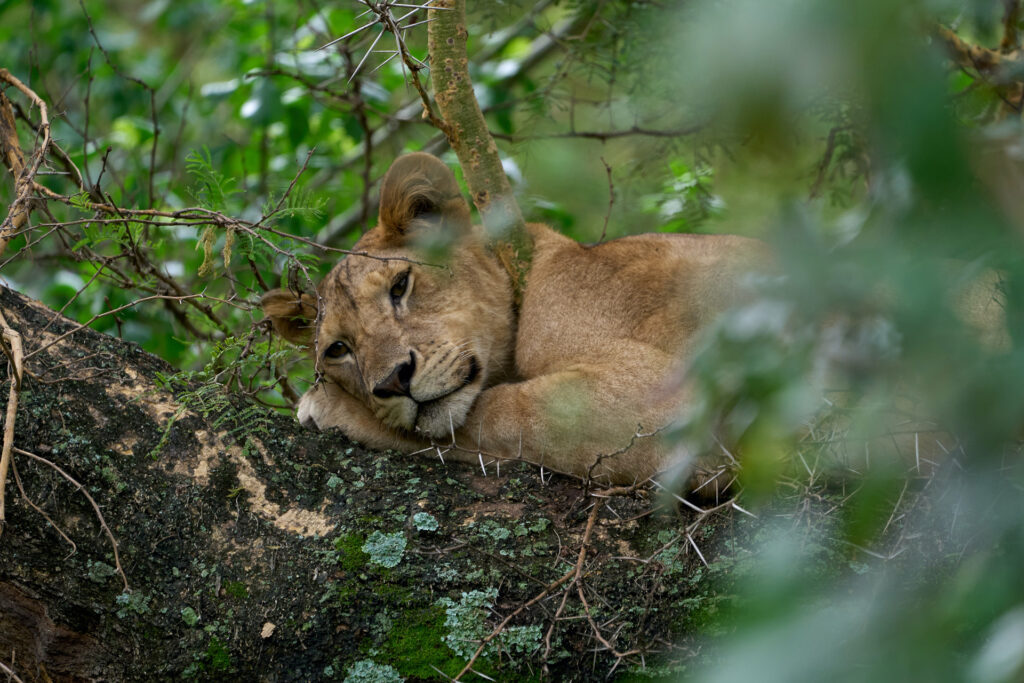ake Manyara National Park is a scenic gem located in northern Tanzania, at the base of the Great Rift Valley escarpment. Covering approximately 330 square kilometers, the park includes a shallow alkaline lake, lush groundwater forests, acacia woodlands, and open grasslands, offering a diverse range of habitats within a relatively small area.
The park is renowned for its rich biodiversity and stunning landscapes. It is home to a wide variety of wildlife, including elephants, buffalo, giraffes, zebras, and the famous tree-climbing lions. The lake itself attracts thousands of flamingos and other waterbirds, making it a haven for birdwatchers.
Lake Manyara’s unique setting between the escarpment and the lake provides breathtaking views and a serene atmosphere. It’s also known for its hot springs, known locally as Maji Moto, which add to the park’s geological interest.
As part of Tanzania’s northern safari circuit, Lake Manyara National Park offers an ideal introduction to the region’s wildlife and natural beauty, often visited en route to the more expansive Serengeti and Ngorongoro Crater.

🦁 Notable Wildlife at Lake Manyara
Tree-climbing lions – One of the park’s most famous attractions. Unlike most lions, the ones here are known to rest in trees.
Elephants – Large herds roam the park, often seen along the forested areas.
Buffalos – Common in the grasslands and floodplains.
Hippos – Found lounging in the lake or nearby wetlands.
Giraffes – Graceful and often spotted near the acacia woodlands.
Baboons – The park has one of the largest troops of baboons in Africa.
Blue monkeys & vervet monkeys – Frequently seen in the forested zones.
🐦 Birdlife
Lake Manyara is a birdwatcher’s paradise, with over 400 species recorded:
Flamingos – Often seen in large flocks along the lake’s shallow waters.
Pelicans, cormorants, storks – Frequent visitors to the lake.
African fish eagle, hornbills, kingfishers – Common in various habitats around the park.
🐊 Other Wildlife
Warthogs, impalas, zebras, and wildebeests roam the plains.
Crocodiles can sometimes be spotted near the water.
Leopards and hyenas are present but more elusive.
🌿 Ecosystems
Groundwater forests near the park entrance (lush and green year-round)
Acacia woodlands and open grassy plains
Marshes and the alkaline lake attract a wide variety of species
🗺️ Location
Northern Tanzania, along the Great Rift Valley escarpment
About 126 km (78 miles) west of Arusha (about 2 hours by car)
🌍 Size
Covers 325 km² (125 sq mi)
The lake itself takes up around two-thirds of the park
🐘 Wildlife
Famous for its tree-climbing lions (super rare!)
Large elephant herds
Over 400 bird species including:
Thousands of pink flamingos
Pelicans, storks, cormorants
Other animals:
Giraffes, zebras, wildebeests, hippos, baboons, warthogs, leopards
🌿 Landscape & Scenery
Incredibly diverse for its size:
Groundwater forest (lush, green)
Acacia woodland
Swamps & marshes
Alkaline lake (Lake Manyara)
Rift Valley escarpment backdrop (gorgeous views)
🗓️ Best Time to Visit
Dry season (June–October) for best wildlife viewing
Wet season (November–May) for birdwatching and lush landscapes
But roads can get muddy
🚗 Activities
Game drives
Bird watching
Canoeing (when water levels are high)
Nature walks
Visit nearby villages (like Mto wa Mbu)
🏕️ Accommodation
Budget to luxury lodges & camps inside or near the park
Options in Mto wa Mbu or Karatu
📌 Fun Facts
Lake Manyara is a soda (alkaline) lake—not good for swimming, but great for flamingos!
Ernest Hemingway called it “the loveliest lake in Africa.”
It’s one of Tanzania’s smaller parks, but packed with biodiversity
